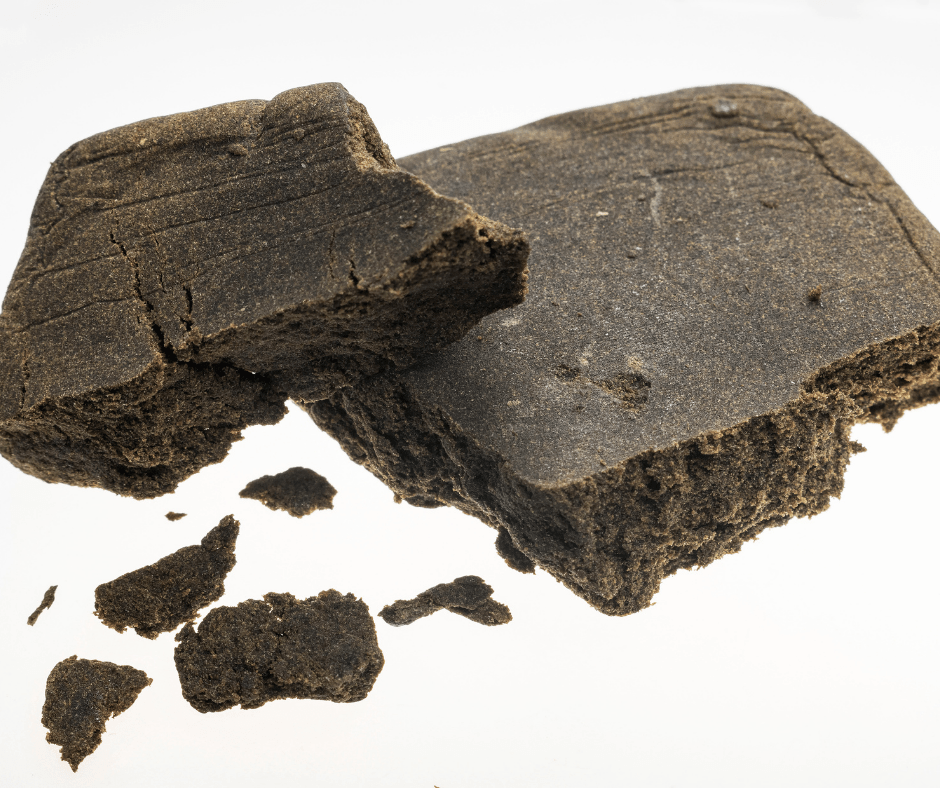Hash Rosin
The History, Production and Uses of Hashish
Discover the history, production and uses of hashish, and how this ancient recreational drug is still a popular choice for people seeking those mellow, traditional highs.
Hashish has been consumed as both a recreational drug, and as a part of religious ceremonies for centuries. This dark, sticky, gum-like substance is made by squeezing and rubbing the trichomes (small outgrowths and appendages) of the cannabis plant.
Originally a product of West Asia, these days, some of the world’s best hash comes from the Caribbean island of Jamaica. So let’s take a look at the history of this intriguing drug, how it compares to other recreational cannabis products, and how you, too, can experience the traditional highs of Jamaican Gumball hash.
The Charas of India
The word hashish comes from an Arabic word, ḥašīš, meaning “pressed cannabis.” It was introduced into the Middle East from India during the 15th century by Mongol raiders, who carried the drug in the form of charas, small balls of cannabis resin, with them on their invasions.
Charas are traditionally produced by rubbing fresh cannabis leaves between the palms of the hands, which squeezes the resin out of the plants. When the producer’s hands become coated with resin, it is scraped off the skin and rolled into small balls.
Hashish as we know it
The first known use of the word “hashish” occurred in a pamphlet published in Cairo in 1123, accusing Nizari Muslims (a highly-educated and intellectual branch of Shia Islam) of being “hashish-eaters.” The Nizaris emerged after the fall of the Fatimid Caliphate (10th-12th Century), and are more commonly known as “the sect of the Assassins.” The word assassin that we use today, is a corruption of hashishin, which is Arabic for “hashish-smokers.”
It is interesting to note that the smoking of hashish did not become common until after the introduction of tobacco from South America in the 16th century. Prior to that, hashish had always been consumed as an edible in the Muslim world.
Hashish was introduced into Europe during the 18th century by troops returning from Napoleon’s campaigns in Egypt. The drug’s medicinal uses were soon being studied, and its psychoactive effects became a common part of treatments for psychiatric problems.
The Hash Club
During the 1840s in Paris, the Club des Hashischins, French for “Club of the Hashish-Eaters” was a group of artists, writers and intellectuals dedicated to the exploration of drug-induced experiences, notably with hashish.
Members included the writer Victor Hugo (author of Les Miserables and The Hunchback of Notre Dame), and Alexandre Dumas (author of The Count of Monte Cristo and The Three Musketeers).
The Hashbury
During the sixties and seventies, smoking hash has was an integral part of the hippy culture. Travellers crisscrossed Asia in search of the best hash experiences. From the markets of Kabul, and Dal Lake in Kashmir, to the deepest recesses of inner-city San Francisco, hash aficionados created an entire culture of adventure, mystique and fascination around the use and pleasures of smoking hash. Indeed, the use of hashish among the hippy movement was so ubiquitous, that the area of San Francisco where they congregated, the Haight-Ashbury, became known as “The Hashbury.”
Is Hash Stronger Than Kief?
The word kief (pronounced “kif”) comes from the Arabic word kayf which means “pleasure.” It is composed of the tiny crystals of terpenes and cannabinoids that collect in the base of a grinder used to grind cannabis plant material into the fine consistency needed to roll it up.
The Pleasure Principles
Both hash and kief have specific benefits and uses. Depending on your needs, kief is easier to obtain than hash (you can collect it yourself when you grind up your weed) but does not have quite the same narcotic effects. Smoking kief creates a stronger high than just simple weed, but you need to ensure that it is as pure as possible. Any plant material remaining in your kief after you’ve ground it out of the cannabis will create a bitter, woody taste.
Hash, on the other hand, provides a much more intense high, and has numerous options for smoking it. Traditionally smoked in a hookah, or water pipe in the Middle East, these days, and thanks to the hippies of yore, the ways to smoke hash are almost limitless. Of course, unlike kief, which you can make yourself, hash needs to be purchased from a reputable supplier. But don’t let that put you off, man. Read on to find out where you can get hold of the best Jamaican Gumball hash on the planet!
Is Hash the Same as Wax?
Shatter, rosin, wax, oil…these are all forms of hash. As technology (and people’s imaginations) has evolved, a myriad of different ways to extract, refine, and market products derived from cannabis have come into being.
A rose by any other name is still a rose
Wax, to be specific, is simply a more highly refined and processed form of hash. It is generally made using an extraction process involving chemicals and laboratory equipment. And even though wax may provide a more intense high, and have more options for using it, cannabis aficionados looking to experience those old-school highs, loved and revered by the assassins, the Mongol horsemen, the European intellectuals, and the Hashbury hippies, still prefer to blaze up a bit of fine, traditional hash.
What is the Strongest Hash?
Well, that’s a good question! Of course, everyone is going to have their own idea of what constitutes the best, and the strongest, hash. But just for the sake of conversation (not an argument…we’re all about keeping it mellow!), here are five hash strains favoured by the world’s top “hashishins.”
- Gorilla Glue
- OG Kush
- NYC Diesel
- Harlequin
- The White
Individual users can sample as many different types of hashish for themselves in order to find the product that suits their needs best. But let’s take a quick look at one of the most authentic and sought-after hash products available today: Jamaican Gumball Hash
Jamaican the hash, mon?
Jamaicans do hash old school! Jamaican hash is produced using the same technique that has been used in the Himalayas for centuries: by hand-rubbing fresh cannabis into charas.
The Tropical Heat
While much of the world’s hash is now produced in factories and labs, Jamaicans make most of their hash in the traditional manner: by rubbing the fresh cannabis flowers against their hands.
This is the traditional technique, that originated high in the mountains of the Indian Himalayas, producing the charas of old that then spread across the Middle East and then the world. The fresh cannabis flowers, heavy with the sticky THC, bake in the hot tropical Jamaican sun, and then sticks to the hands of the workers as they rub it.
The resulting hash has a strong, earthy aroma, redolent of those hot Jamaican days and long sultry Caribbean nights. Smoking it produces a long, deep high that will transport you out of your everyday cares, and back to the days of the hippy trails and the Arabian nights of old.
Salish Trails
Salish Trails have an in-depth knowledge of Jamaican hash and all of the benefits that can accrue from its use. Check out Salishtrails.org or navigate straight to our Jamaican Gumball Hash page by clicking here.
* * All views expressed here are from a third-party source and do not necessarily represent the entity of Salish Trails itself. This blog post is intended to be used for informational purposes only

